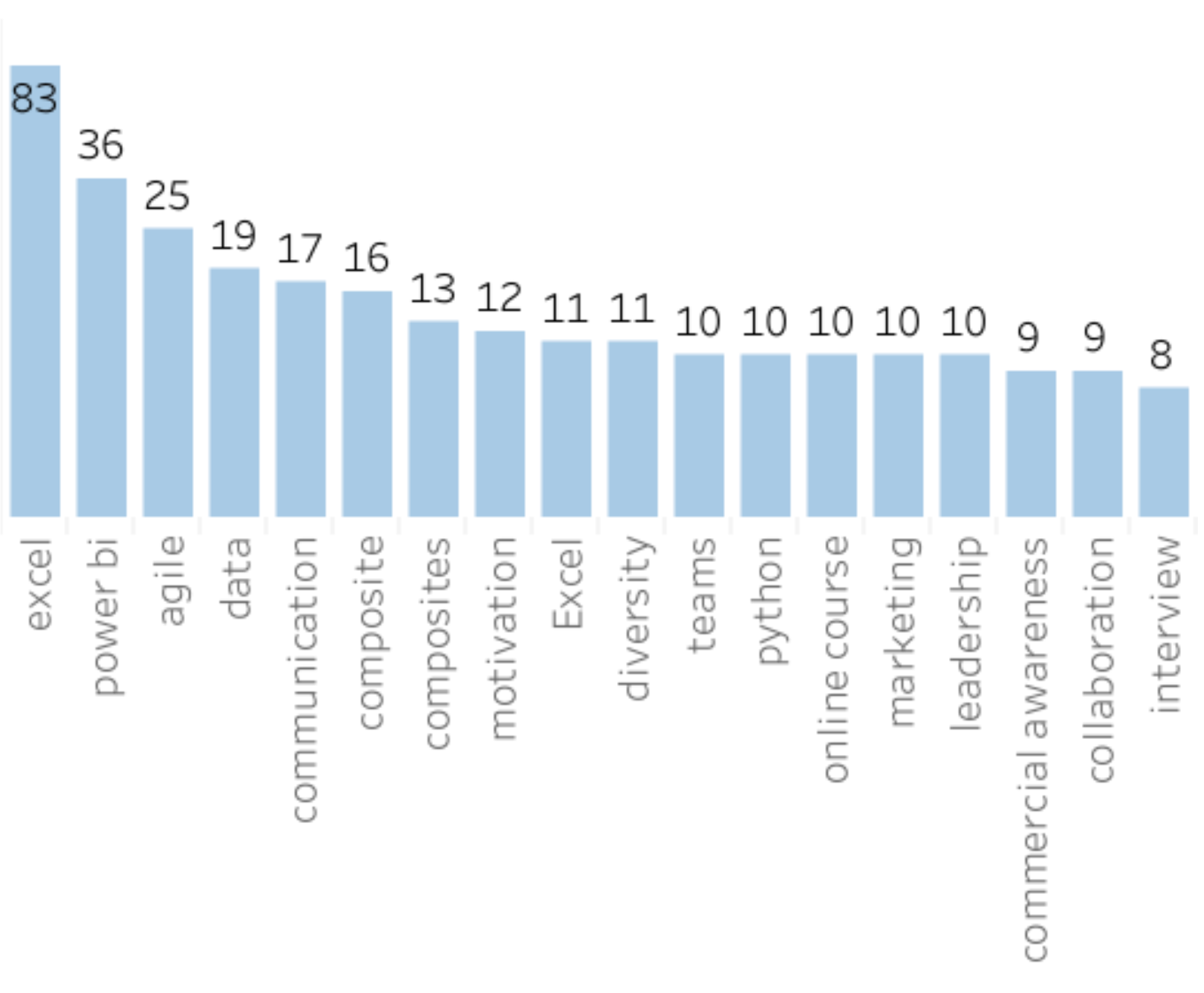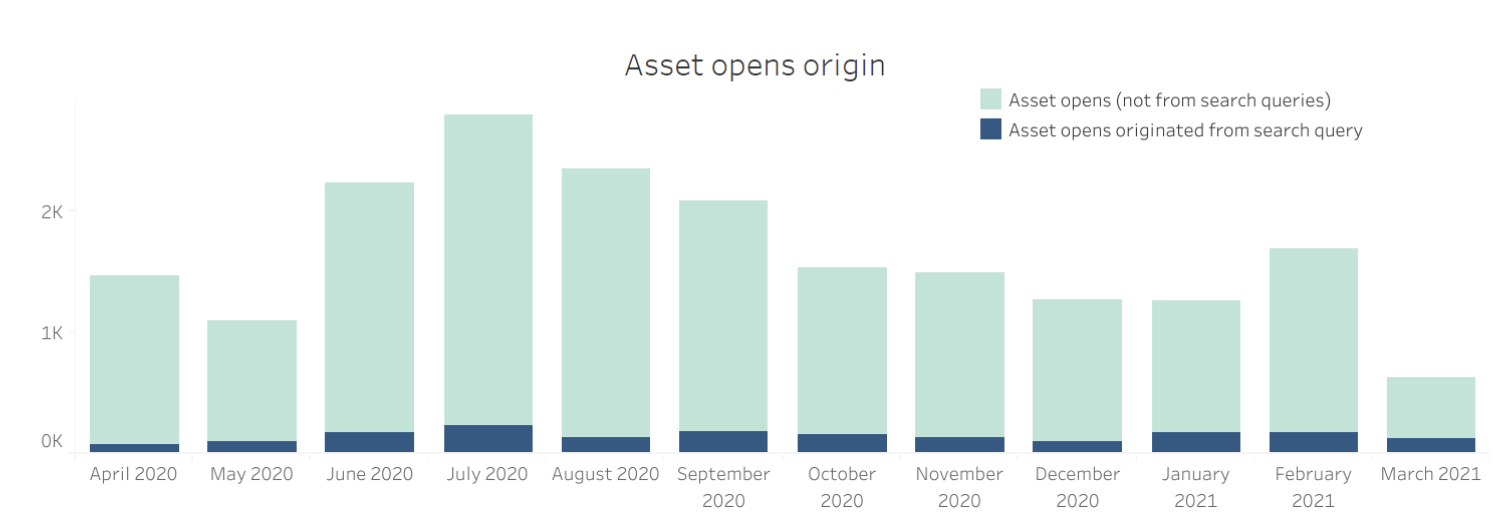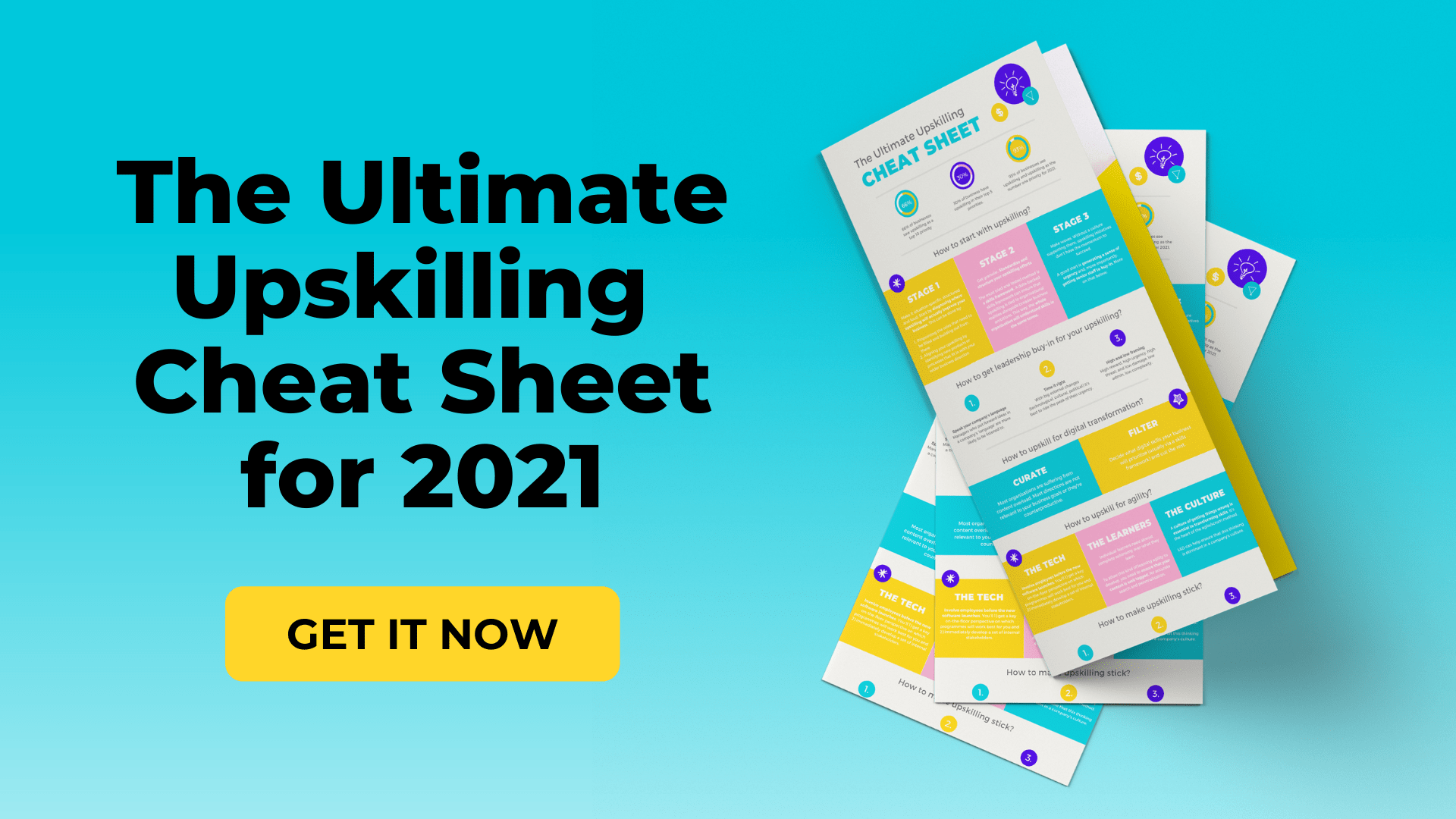When the World Economic Forum’s 2018 Future of Jobs Report predicted that, by 2022, 75 million jobs across 20 major economies will be displaced by emerging technologies, COVID-19 wasn’t a factor. But the crisis has sped up digital transformation by several years, widening the chasm between skills companies have and the ones they need.
Longer term predictions are no less threatening. According to the OECD, over 1 billion jobs, almost one-third of all jobs worldwide, are likely to be transformed before 2030. And the half life of skills is decaying.
Even if we weren’t in the midst of a skills crisis, reskilling would still deserve to be at the top of business consciousness. In about 75% of cases, it pays for an organisation to reskill an employee. Even without immediate financial benefit, 94% of employees say they would stay at a company longer if it invested in their career development.
Almost all businesses are aware of the enormity of the reskilling problem they’re facing. Few have found sustainable solutions. That’s largely because they’re avoiding uncomfortable realities.
The cracks in the strategy
Currently, most leading organisations and strategists are emphasising two things: that it’s necessary to pick up new skills and that hiring is the less efficient option. But, the prevailing wisdom is currently theoretical at best. While leaders emphasise wider strategic steps, they gloss over the technical and practical details. Reskilling strategy has to be founded on the practicalities of getting learning done at scale.
McKinsey lays out five solutions:
- Clarify 3-5 year business goals
- Identify the skills required to execute this strategy
- Accurately map existing skills in the organisation through a skills audit
- Calculate the skills gap (what skills the business needs compared to what it has)
- Develop scenarios to close the gap
However, the article makes one fatal assumption: that the learning ecosystem in its current state is up to the task of realising business strategy. It’s not.
Firstly, mapping internal and required skills is easier said than done. If the planning comes from the top, rather than taking a balanced approach to the skills framework, the mapping is often left to committees or individuals who are separated from the process of work. Consequently, the skills they decide the business needs are detached from operational reality.
Secondly, and more problematically, this strategy doesn’t factor the reality of the content situation in most businesses. Before anything else, reskilling any individual requires the right learning to bridge the skills gap. But, almost no businesses are currently able to pick out the right piece of learning for the job.
Searching for a reason
Some businesses rely on learners to find the materials they need - after all, they know their own jobs. But, it’s unlikely that any employee has the business strategy in their head at all times. And, without an idea of overall goals, learners’ searches lack the nuance needed to fill organisation specific skills gaps. For example, here are the most searched terms for one of our clients: 
As you can see, learners search for broad information, not specifics. They don’t have time for nuance, they just want to get the learning done as quickly as possible. If we compare this to the results that come up from the search we can see the potential dangers of not managing content accordingly. Here’s what users see when they search for “communication”:

These are all good assets, but they’re addressing a broad range of communications skills. They’re not nuanced. Instead, they include results for digital communication, authentic communication, the psychology of communication, business communication and more.
These came up because the business wanted these specific types of communication to filter through. But they’re not necessarily aligned with the most needed communications skills for that specific employee. They may already be great at emails, reading their boss, or imitating Sheryl Sandberg.
And when you add the poor state of tagging and sheer content overload in almost every learning ecosystem into the mix, it doesn’t take long before learners start to disengage due to the poor results from search and, eventually, stop coming to the platform altogether.
Avoiding the wrong recommendations
However, when you start to build up a skills signature for every learner and use that to power personalised recommendations, you can win them back through extreme relevance. That’s one of the key principles of the Filtered platform.
Take this anonymised data from another client, for example. It’s clear that when recommendations are good enough, users much prefer them to search.

However, most platforms just aren’t up to scratch in this regard. Indeed, 50% of HR and learning managers admit to not delivering the right training for employees to fulfil their potential in their role.
This isn’t laziness or ineptitude. It’s about content overload. There’s so much content out there, and it’s so badly tagged, that it’s next to impossible to pick out the content that your learners need. Most businesses don’t have the time to sort through their constantly growing piles of content - or they’re forced to employ people specifically to do it!
Where the smart comes in
But what about if, instead of hiring extra people, you can purchase a platform that does their job and much more? Talk about an easy way to justify an LXP purchase to your CFO.
The thing businesses really miss when trying to take control of their content and match it to skills is time. If you want to understand whether a piece of content is right for the specific skill you want to inspire in a business, you need to read/watch the whole thing. The metadata isn’t enough. But how do you read the tens of thousands of pieces of content?

Technology is the solution. We’ve developed software, called Content Intelligence, that runs through a business’s entire content provision and ranks it according to how well it fits each nuanced skill in the business’ framework. It judges the text of the content itself and analyses an entire content library in a matter of minutes.
By consulting with the business on what each individual skill means for them and feeding nuanced skills into the tool, we can ground the artificial intelligence in human expertise. That way, Content Intelligence bypasses undependable meta tags to understand what each piece of content actually achieves. Allowing you to match it perfectly with each learner for their individual requirements and reskill the business at scale.


